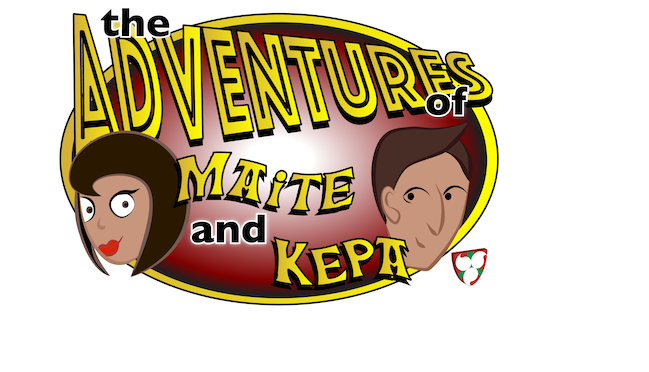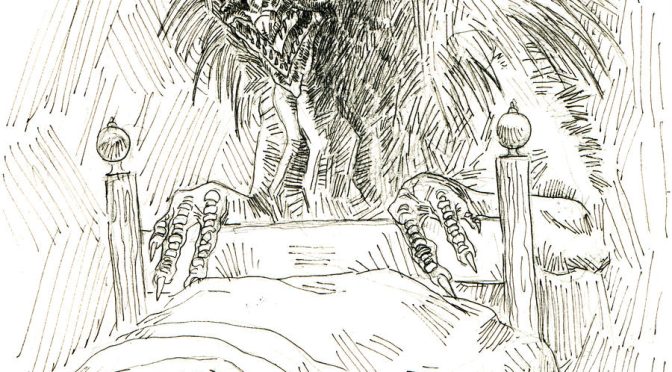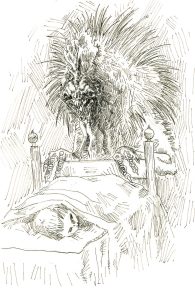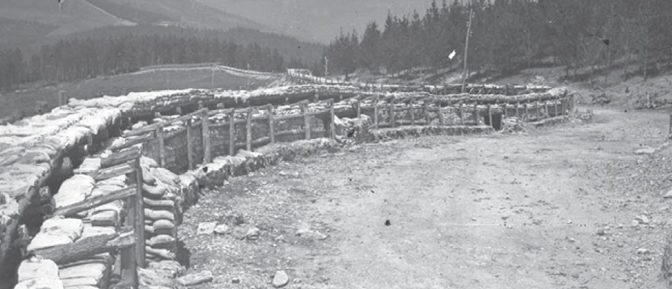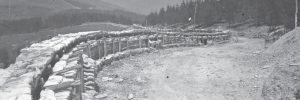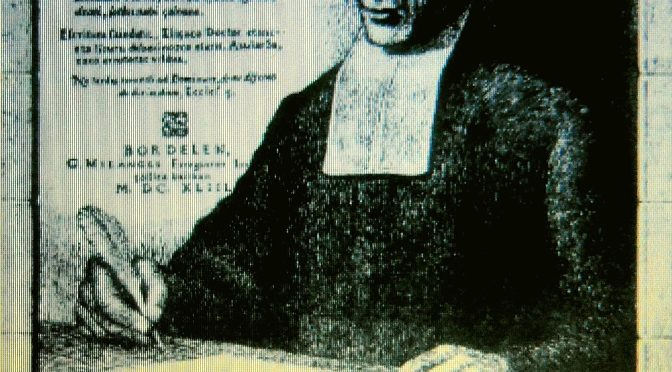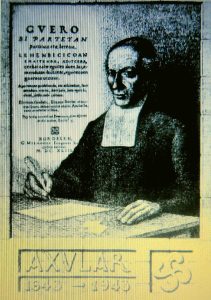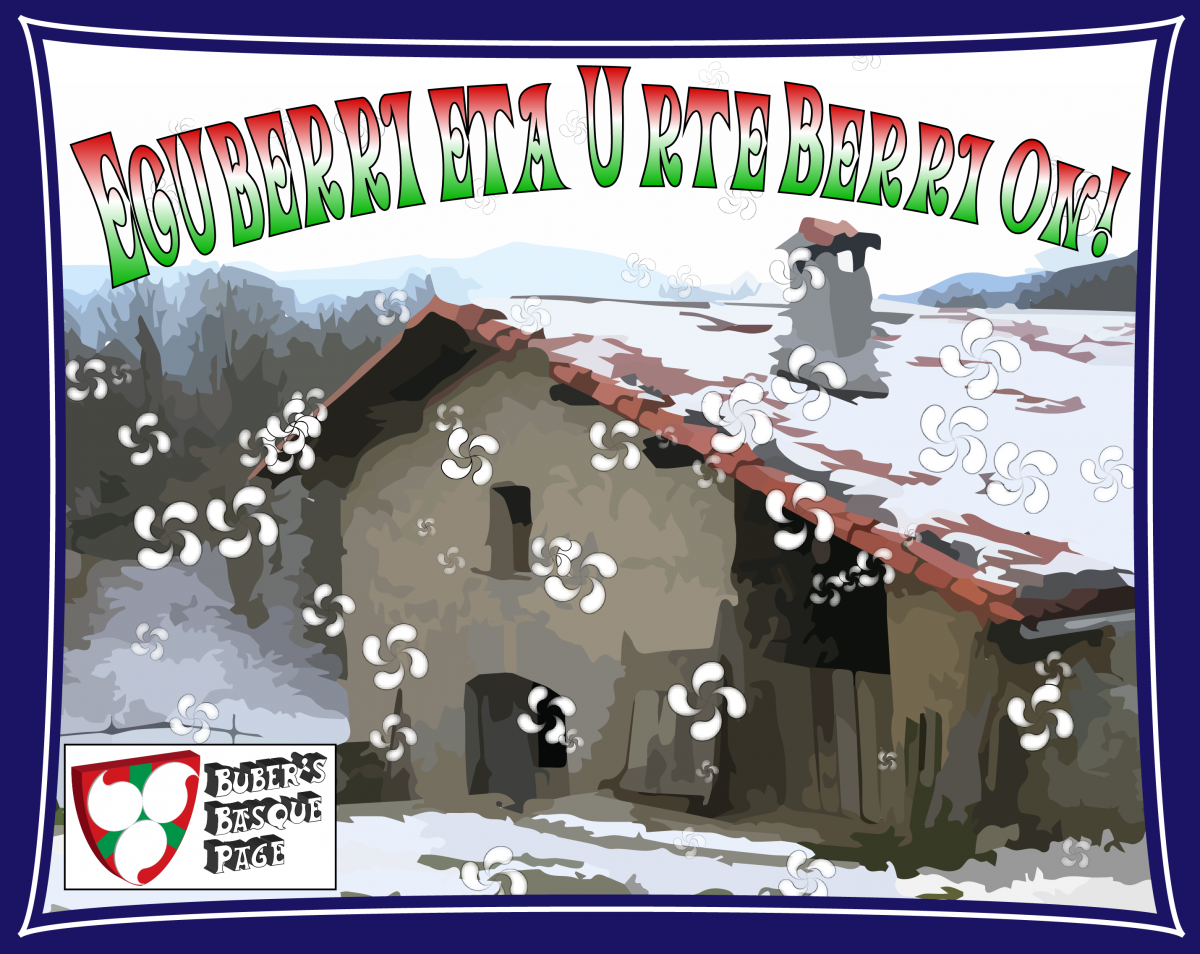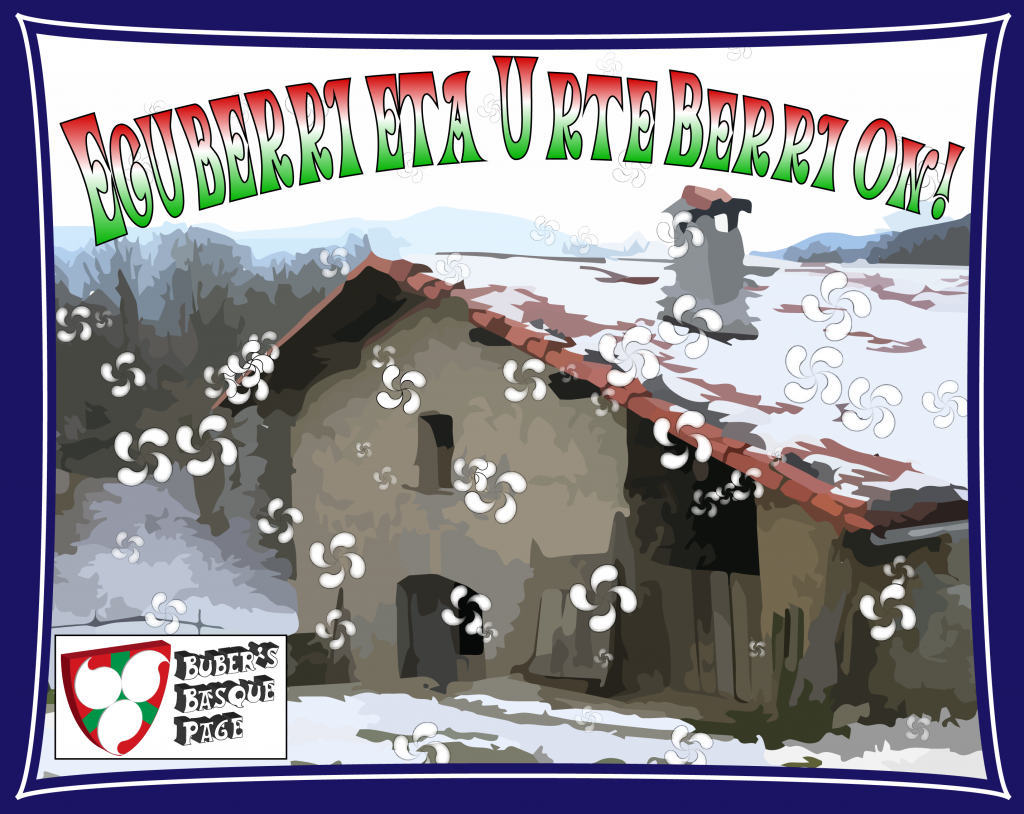Weeks had passed and classes were about to begin for Maite. Kepa had continued to check out the local bars to see if anyone could use a bartender or waiter, but so far, he hadn’t found anything he liked. Or rather, no one had seemed to like him. He had been let go from his first job in the Parte Vieja and no one since had been willing to give him a chance. They all told him that helping out at the local taberna in a small village simply didn’t compare to the bustle of the big city – none of them thought he could keep up. Eventually, he decided he needed to go a bit away from the heart of the city and check out some of the quieter neighborhoods, maybe a side street, and see if anyone there might give him a chance.
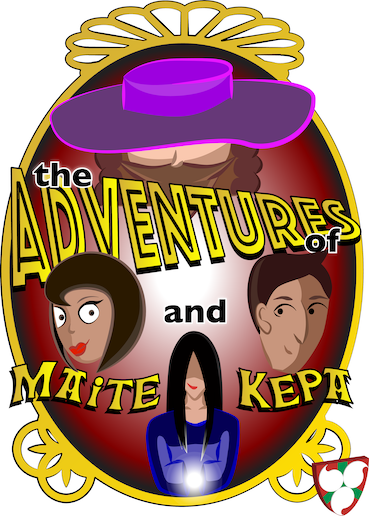
“Egun on,” he said as he entered what was probably his fifth stop today.
A woman stood behind the bar drying glasses. She was probably in her late forties. Her black hair, pulled tight into a bun behind her head, showed a few streaks of silver running through it. She wore a loose-fitting t-shirt that looked like it might have been as old as Kepa. The words “Negu Gorriak” were emblazoned across the front.
“Barkatu,” she said without looking up. “But we are closed. We open at 2. Come back later.”
“I’m not here to eat or drink,” replied Kepa tentatively – the woman gave off an almost hostile vibe. “I was hoping you might be looking to hire.”
“Hire?” replied the woman quizzically as she put the glass down and looked up. Her striking grey eyes almost seemed to pierce Kepa. “What do you mean, hire?”
“I’m…” stammered Kepa. “I’m trying to find work,” he finally belted out. “Anything really.”
“Do you know how to cook?” asked the woman.
“Only what my ama taught me,” replied Kepa sheepishly. He wasn’t sure why, but this woman really made him feel uncomfortable. She exuded a confidence, a power, that took him off guard.
“Etorri,” barked the woman as she passed behind the bar to the kitchen. Once there, she pointed at the stove. “Make me a tortilla.”
Kepa scanned the kitchen, locating a pan and the fridge where he assumed the eggs would be.
“How do you like it?” he asked.
“Very good question,” replied the woman with a smile. “Most people don’t bother to ask. I like mine just a little gooey inside.”
Kepa smiled as he hefted the pan in his hand. “The same as me.”
He cracked the eggs and peeled the potatoes. Soon the pan was sizzling. He knew it was a risk, but he decided he needed to do whatever he could to impress the woman. He flipped the tortilla in the air and caught it dead center in the pan. Moments later, he was plating a slice and handing it to the woman.
“Not bad,” judged the woman as she took a bite. “Do you think you can do it any faster?”
“Probably,” replied Kepa.
“Oso ondo. Come back tomorrow around 12.”
As Kepa was about to leave the bar, he turned to see the woman back behind the counter, continuing to dry glasses.
“Eskerrik asko,” he began and then paused.
“Iratxe,” she replied. “See you tomorrow.”
If you get this post via email, the return-to address goes no where, so please write blas@buber.net if you want to get in touch with me.

